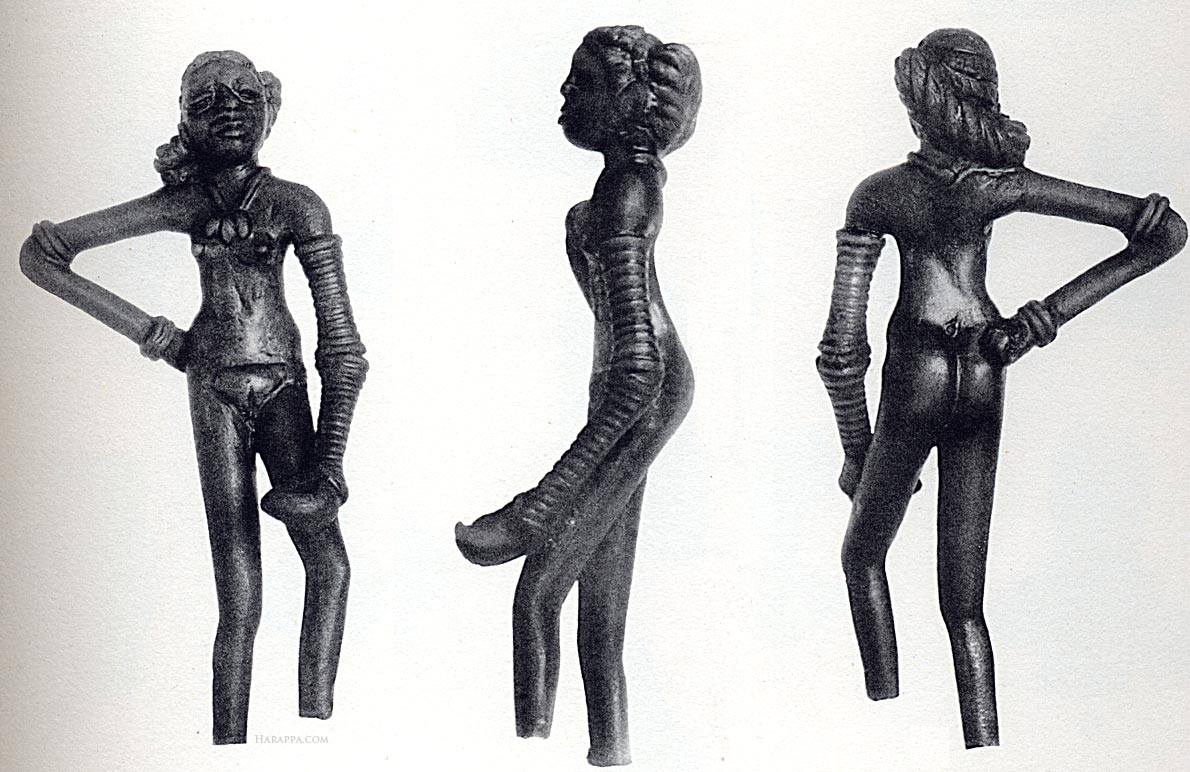The Indus Valley Civilization, one of the world’s oldest and most mysterious civilizations, has left behind a treasure trove of artifacts that continue to captivate archaeologists and historians. Among these artifacts, one finds a unique and fascinating category: the dancing girl figurines. These small bronze statues, depicting young women in graceful dance poses, offer a glimpse into the artistic and cultural sophistication of the people who lived in the ancient Indus Valley.
Discovered in the 1920s during excavations at the archaeological site of Mohenjo-daro in present-day Pakistan, the dancing girl figurines have since become iconic symbols of the ancient civilization. Standing at around 4 inches tall, these exquisite bronze sculptures showcase an advanced level of metallurgical skill and artistic mastery, challenging our understanding of the past.

The most renowned of these figurines is often referred to as the “Dancing Girl of Mohenjo-daro.” Her pose is a testament to the fluidity and dynamism of dance, as she stands with one hand on her hip and the other raised gracefully. The meticulous detailing of her jewelry, including bangles, a necklace, and a headdress, adds a touch of realism and cultural richness to the figure.
One of the most striking features of the dancing girl figurines is the realism in their representation. The artists of the Indus Valley Civilization paid careful attention to anatomical details, portraying the female form with a remarkable accuracy that goes beyond mere symbolism. The statues emphasize the natural curves and proportions of the body, celebrating the human form in all its grace and beauty.
The purpose and significance of these dancing girl figurines remain a subject of speculation among scholars. Some suggest that they may have been religious or ritualistic objects, possibly used in ceremonies or festivals dedicated to fertility or cultural celebrations. Others propose that these figurines might have adorned the homes of the elite, serving as symbols of wealth and cultural refinement.

The sophistication of the metallurgical techniques used to create these bronze figurines is also noteworthy. The ancient artisans of the Indus Valley employed the lost-wax casting method, a complex process that involved creating a wax model, covering it in clay, and then melting the wax to leave a mold for the molten metal. This advanced technique indicates a high level of technological prowess in metalworking, setting the Indus Valley Civilization apart as an advanced and innovative society.
The dancing girl figurines offer a glimpse into the daily life and cultural practices of a civilization that thrived over 4,000 years ago. They transcend time, inviting us to marvel at the artistic expression and cultural richness of an ancient people who lived in harmony with the rhythm of dance.
As we continue to unravel the mysteries of the Indus Valley Civilization, the dancing girl figurines stand as silent witnesses to a bygone era. Their beauty and intricacy echo the timeless human impulse to express joy, celebration, and the essence of life through art. In the dance of the ancient bronze figures, we find a connection to the past, an artistic legacy that continues to inspire awe and fascination in the modern world.


